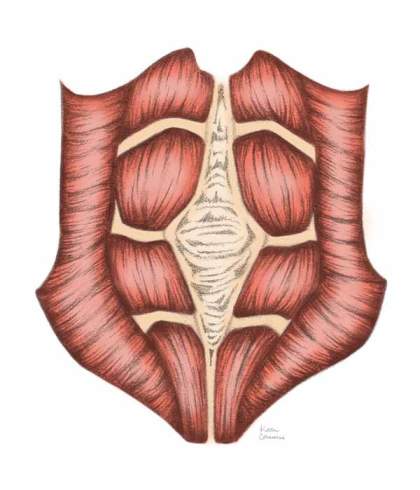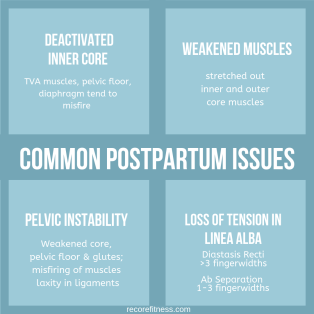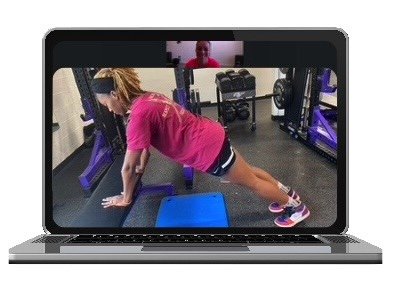Can my Diastasis Recti close all the way?

Common question. Complicated answer. First off, there is hope! But if someone is promising you that your D.R will close all the way, please find another health professional that won't guarantee something they can't.
What is Diastasis Recti or DR? Simply put, it is stretching (not a separation) of the linea alba between the rectus abdominus muscles, 2-3 finger widths or more apart.

| Illustration of Diastasis Recti |
What is a normal width? The linea alba in a normal adult is about 1/2 to 1 finger width, although this can vary a little. The linea alba is also normally tight instead of lax.
So can my diastasis close all the way?
Simple answer:
Possibly and….it probably will get close enough to not need surgery.
Long Answer:
While I specifically help women strengthen their core after pregnancy and work with many that have diastasis recti, this really shouldn't be the ultimate goal. Why? Because there are many other factors and variables to healing and measuring diastasis recti. While some can restore typical length and laxity, some will not be able to and do not need to in order for it to function well. Yes, it is true.
IDEAL HEALING ENVIRONMENT
1-Gradual progressive inner/outer core exercises
2-Splinting (recommended if within 3 months post-partum)
3-Avoiding high pressure exercise (temporarily) until threshold improves
Gradual progressive core exercise is key. Building inner and outer core coordination and strength progressively is important in order to help increase blood flow, strengthen fibers and load the tissue. Too many moms are just doing basic transverse abdominal (TVA) exercises over and over and while it is helpful, it isn't enough to stimulate change in muscle or tissue length and strength. So while they see some improvement, they don't restrengthen the core enough to engage well during exercise, putting them at risk for DR to return. Many also jump from basic TVA exercises to difficult core exercises such as plank variations or full push-ups before the core is strong enough to handle that exercise resulting in poor form or risk of further separation. Gradual strength progression is key.
Timing - Connective tissue has a remodeling phase and while this can last from one month or many months, it begins within a few weeks post pregnancy. While pregnancy is different than a quick onset injury, it is still somewhat similar. Tissue is trying to remodel whether the separation is minimal or large. Regardless of a degree of separation, the linea alba is vulnerable and weak postpartum. Yes, hormones from pregnancy and breastfeeding are present postpartum, but it doesn't mean strengthening can't happen. This is the time to restore core coordination and strength before returning to more vigorous exercise.
Splinting - While wearing the FITsplint is optional, splinting does seem to help speed the healing process. See FITsplint research. I do recommend it for my post-natal clients (within 3 months) regardless of separation. It can help protect, support and compress the tissue. *Splinting for up to 4-6 weeks is recommended while doing progressive core exercises.
*Not all splints or binders are created equal and yes, some are too stiff and restrictive (corsets)
Sometimes the tissue doesn't actually tighten, but the muscles learn to engage well, making a separation appear"smaller". This isn't a bad thing! Core activation, coordination and strength can improve and muscles can pull closer together when core is engaged. This protects the core when more difficult exercises are performed.
So I don't have to have exercise restrictions the rest of my life? Right! Gradually progress the level of difficulty
1) minimize abdominal separation
2) re-establish core coordination
3) engage core well
4) improve core strength gradually
YES! The majority of moms that recondition their core properly even with some abdominal separation can move on to other core exercises safely. I know there are some cases that need surgery, but I have yet to work with a client that could not move on to more challenging exercises or that needed surgery to restore function.
Is it too late? No, it really isn't ever too late to reconditioning the core. While there are ideal times for proper healing, strengthening can still take place . Muscle will respond the fastest and help engage and protect the tissue.
It's not all about DR postpartum. While DR seems to be the big weakness issue, it really is only one of several issues postpartum. These other weakness issues should also be addressed.

Instead of making your goal to close it ALL the way, give it your best shot, but realize that the finger width isn't the most important data. Make the goal to restore core activation, coordination, strength, stability and function so you can regain your life and move on to your favorite sports or exercise. While a diagnosis of DR is scary at first, it doesn't have to be once it is understood.
And choosing to get a tummy tuck or abdominoplasty done if results are not what you hoped for is okay! Surgery yes comes with risks, but exercise cannot always fix everything. Surgery is an individual decision and journey. It is just important to know that surgery will not strengthen the muscles. Going into surgery with the muscles strong will help in the recovery process.




















We, Jaime and Sheeva, are fertility specialists who work and live in New York City. For a full run-down of education and articles written, click here. Our practice is devoted to helping women achieve their goal of parenthood. Using a team approach (two minds are always better than one) rooted in honesty and transparency, we are... Read More